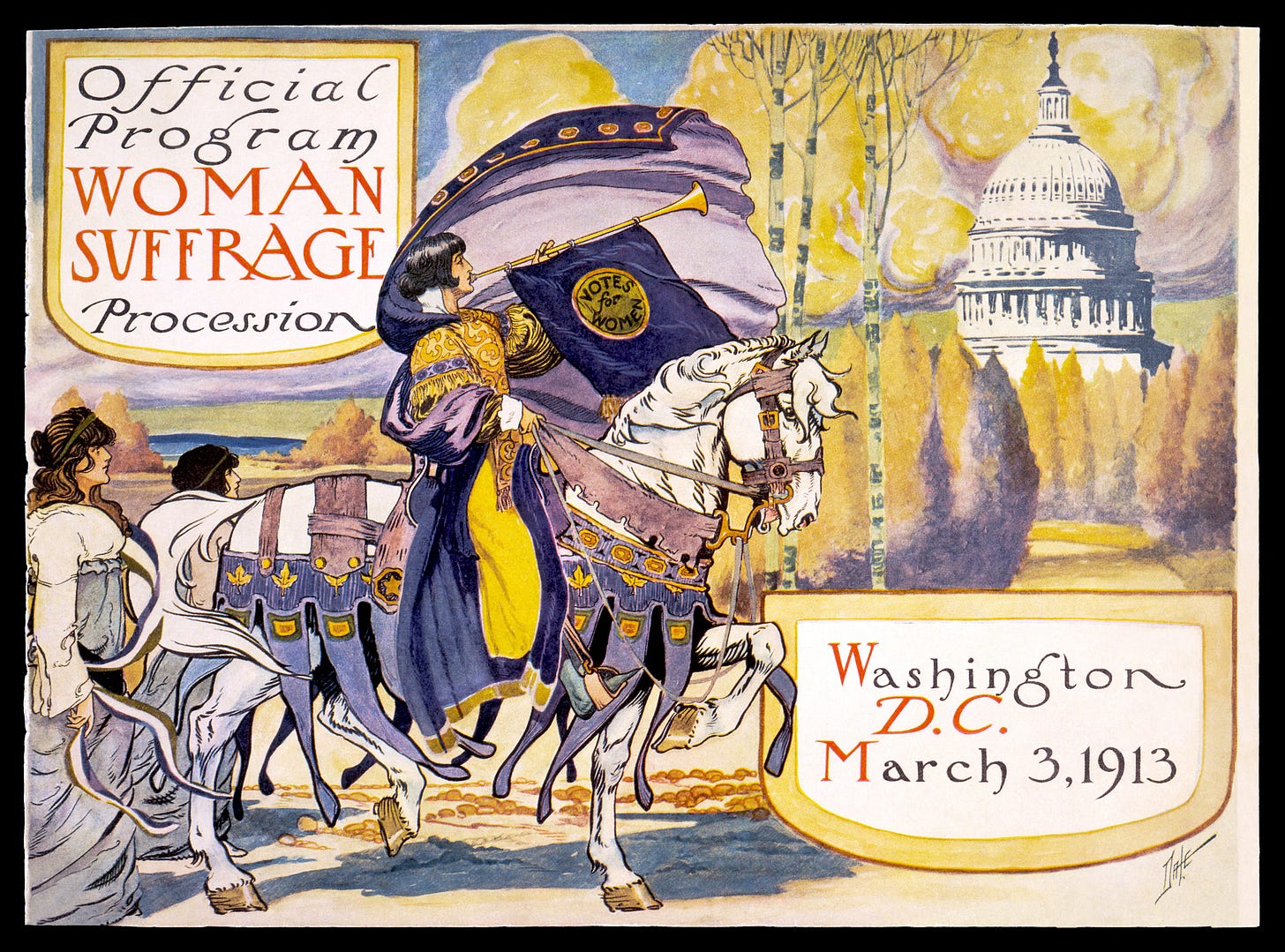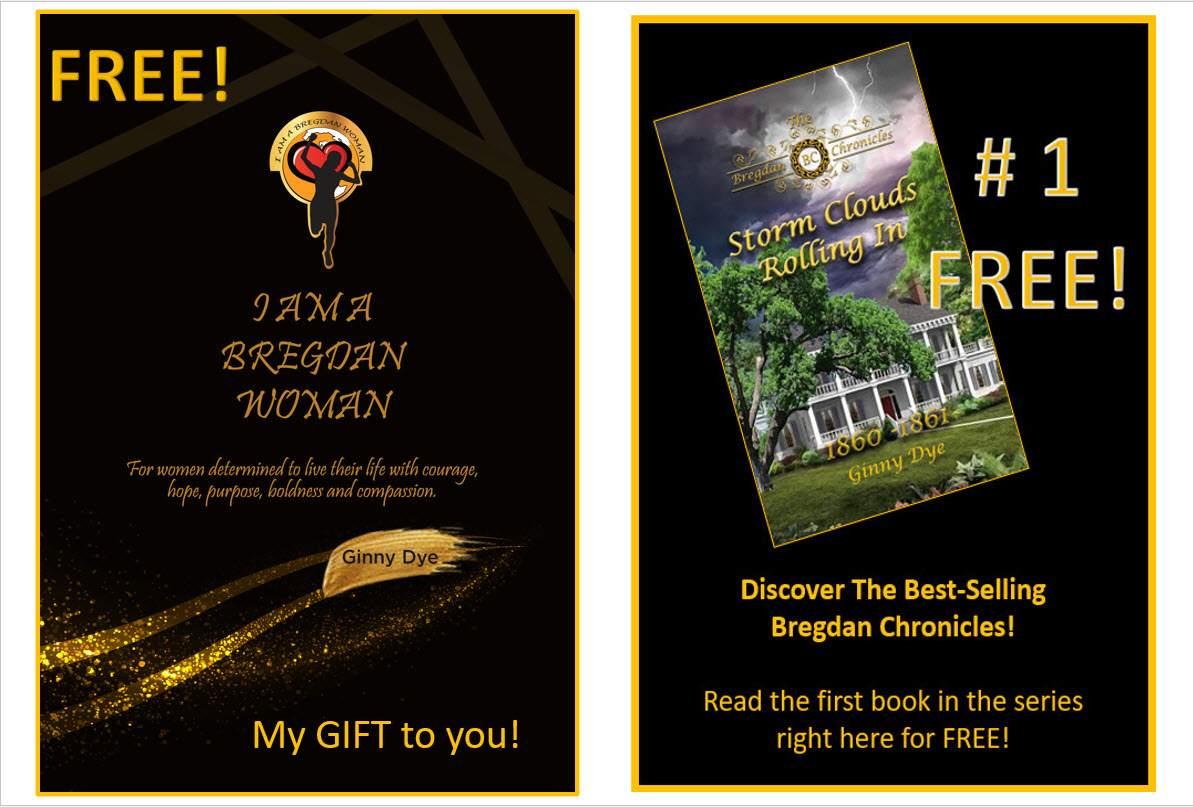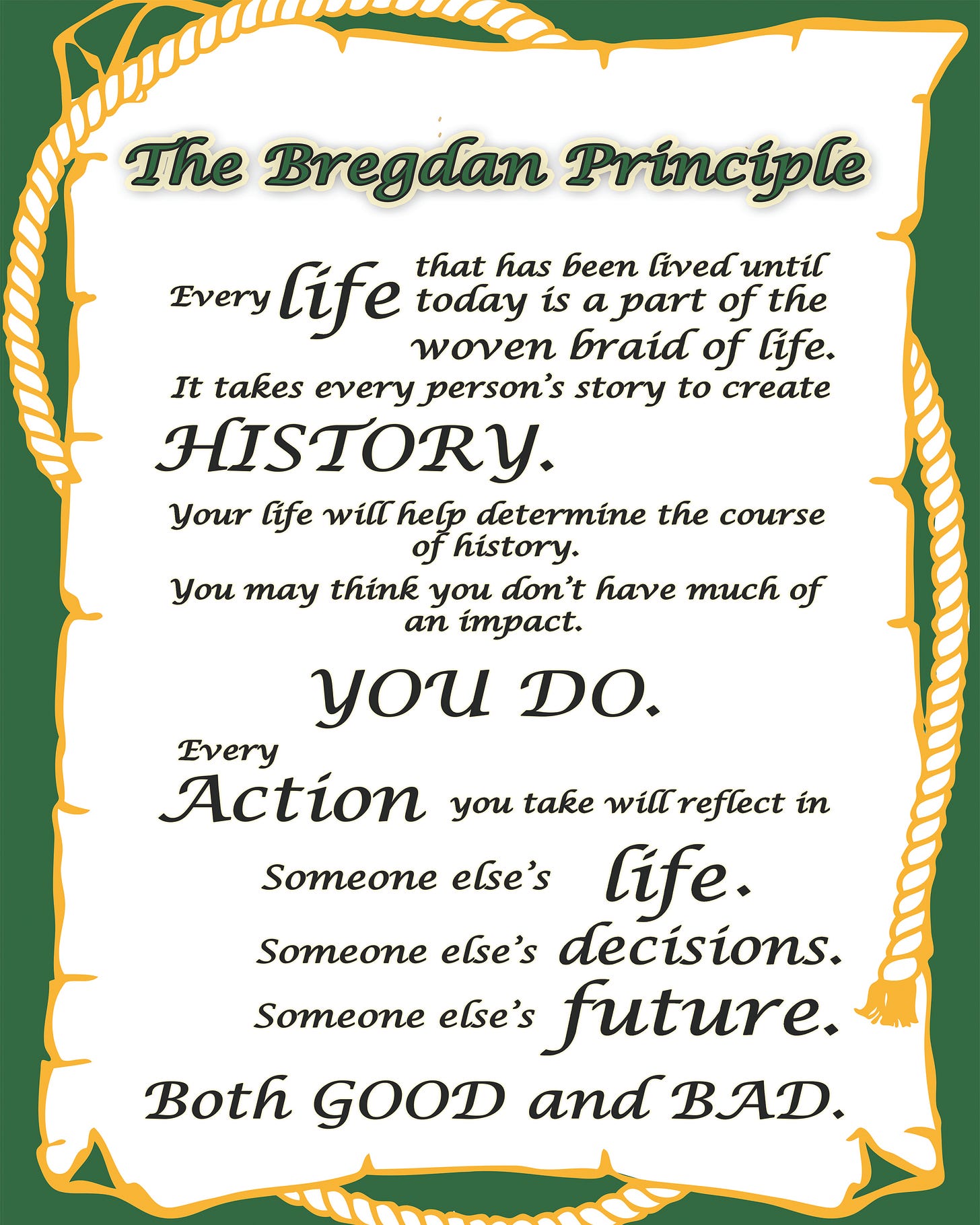# 80 - My Heroines Story Couldn't Be Told In One Letter!
Hello Bregdan Woman!
This is Part 2 of Alice Paul’s story. If you didn’t read Part 1, check yesterday’s post. You don’t want to miss it.
Let’s keep rolling…
When Alice Paul, radically changed by her time in England, returned to the USA in 1910. She was determined to increase her influence in the country. She understood the power of education.
She reenrolled at the University of Pennsylvania, pursued her doctorate, spoke about the British suffrage movement, and completed a dissertation – a comprehensive overview of the history of the legal status of US women.
Her dissertation completed; she joined the National American Women’s Suffrage Association. She was determined to get America’s attention with her radical deeds.
Alice took charge of working for a federal suffrage amendment. The NAWSA was working toward enfranchisement state by state, but Alice’s focus was on the federal amendment.
Alice wasn’t satisfied with women gaining rights state by state, with the possibility they could also be taken away. She was focused on getting it ALL.
Her goal was a constitutional amendment.
Two years after her return, she initiated and organized a publicity event guaranteed to gain maximum national attention.
They succeeded – but paid a high price.
More than eight thousand courageous women joined a parade down Pennsylvania Avenue on March 13, 1913 – the day before President-elect Woodrow Wilson’s inaugural parade. It was the first civil rights march on Washington, DC in American history.
Alice Paul had worked tirelessly to make the event a perfect day – an example of the passion women had for the vote.
Washington, DC was full of men determined to stop the parade. Within minutes of the parade starting, it turned into a full-scale riot. The crowd of men began to shout insults and obscenities. It quickly turned into physical violence and assault. The women were grabbed, spat on, tripped, and shoved to the ground.
Police officers stood by and watched as thousands of women were assaulted. Some of the police participated.
Alice had feared opposition and insisted calvary troops be on standby. Finally, D.C. officials called them in. The calvary opened the way for the women to continue, but when they eventually reached Continental Hall, hours behind schedule, every woman was some combination of filthy, battered, exhausted, unnerved, insulted, furious and freezing. Over one hundred had to be hospitalized.
Alice quickly realized the riot was the best thing that could have happened.
A perfect parade would have been in the papers for a day.
Instead, the suffrage riot was in the headlines for weeks. Editorials denounced the behavior of the crowd. A Congressional Committee held hearings on what went wrong.
While the women recovered from the beatings, suffrage took front and center stage for both politicians and the general public.
It also revealed descension within the ranks.
The Washington March showed that Alice Paul was more than willing to push the bounds of convention. It energized a new generation of activists and sowed the seeds for more visible and aggressive tactics over the next years.
For a look at how this Bregdan Woman’s actions impacted history…
The 1913 parade set the stage for thousands of political marches to follow: every civil rights group that has marched on Washington, every activist who has paraded through the corridors of federal power to gain attention for their cause, every energetic citizen who has rallied in the shadow of the Capitol, has literally followed in the footsteps of these courageous Bregdan Women.
Not for the first time, the differing opinions of women fighting for Suffrage created conflict. Alice Paul’s approach was considered by many other women to be too radical. The end result was that Alice Paul separated from NAWSA and formed a new party in 1916, the National Woman’s Party (NWP).
The NWP took quick action to create public attention. In early 1917, they organized the first public picketing in front of the White House in the nation’s history. Until Alice took action, no one (especially a woman!) had dared to publicly protest the President of the US in such a manner.
Deeds Not Words!
Alice knew radical times demanded radical action. She definitely got the attention she was after!
For me… I learnedhow grateful I should be for my right to vote! I thought I knew a lot about the fight for suffrage. I’ve learned so much writing about Alice Paul!
The NWP women called themselves the Silent Sentinels. They stood quietly outside the White House in non-violent protest. They didn’t speak or interact with bystanders – they simply held their banners. Six days a week, no matter the weather.
The banners asked, “Mr. President, How Long Must Women Wait For Liberty?”
In the beginning, President Wilson treated the women with bemused condescension. Suffrage for women was not something he supported.
During the suffrage battle, there was much going on in the world. Nothing happens in a bubble.
World War I broke out in 1914. Millions were wounded or dying across the ocean. President Wilson proclaimed US neutrality. Many Americans supported this policy of nonintervention. So far, it hadn’t reached the shores of the USA.
American’s feelings began to change, however, when a German U-boat sank the British ocean liner, Lusitania, in 1915. Almost 2000 people died – including 128 Americans. When a telegram was revealed that threatened an alliance between Germany and Mexico against America, Wilson asked Congress to declare war. It took a year of persuading.
During all this time, the Silent Sentinels continued their protest.
With the toll in sunken U.S. merchant ships and civilian casualties rising, America entered World War I in April of 1917.
Calls for unity and patriotism rang through America. Few believed the suffragists would dare picket a wartime president. They didn’t know Alice Paul. She was determined to maintain momentum. As far as she was concerned, now was the perfect time to challenge President Wilson. Why was he calling for support of Democracy abroad, but not providing full democracy at home?
It was a valid question.
Her decision created horrific scenarios.
I’m not going to tell you today, however.
Yes, I’ve decided to make this a 3 – parter. Hey, I’m a novelist. I could diminish the story by shortening it, or I can let you read the rest of the story tomorrow!
I hope that as you read this, you’re being as challenged as I was when I wrote it.
So, until tomorrow…
What will you do to be a Bregdan Woman?
What will you do today to impact history??
We’re on this journey with you… (and have 2 FREE Gifts for you below…)
Ginny & Suess






Like I've said before, I love a good series! I'll be eagerly awaiting part 3